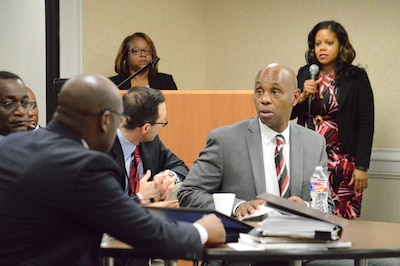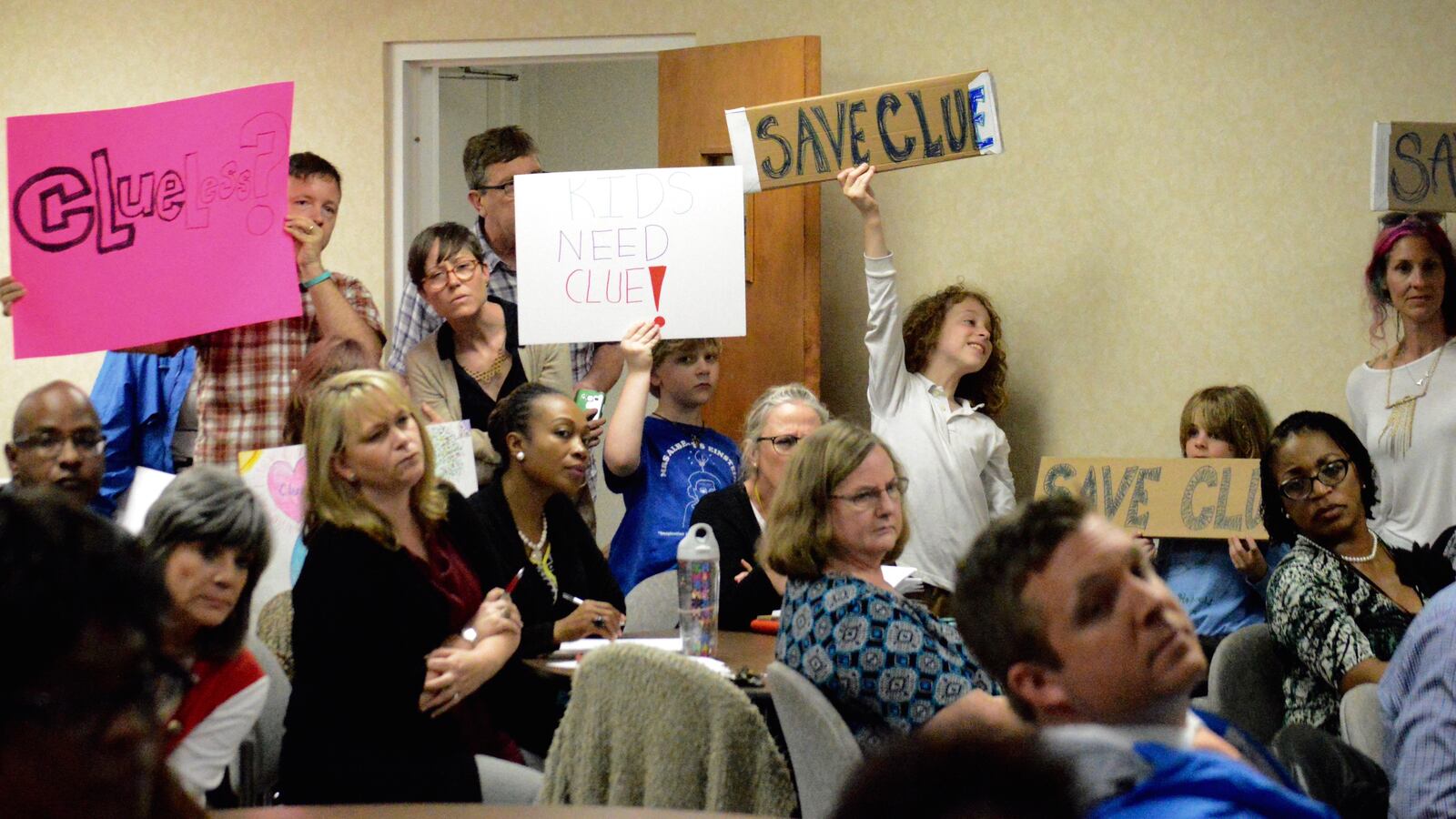More than five years of innovations and investments in teaching and learning have ushered in sweeping changes in Memphis schools that leaders say are just beginning to pay off.
Now leaders worry that the next budget cuts could reverse the academic progress they’ve worked so hard to achieve.
More than $50 million in proposed cuts to staffing and programs were outlined Wednesday as Shelby County Schools Superintendent Dorsey Hopson unveiled a $949 million budget plan for next school year. Even if those cuts are approved by the school board, the district still will face a $36 million funding gap, which Hopson hopes to close with additional money from local and state governments.
The $50 million in proposed cuts would eliminate hundreds of academic staff positions and cut $6 million from special education. It also would impact two major programs that have had success at increasing student achievement: the Innovation Zone, which leads school turnaround work; and CLUE, which focuses on academically gifted and talented students. Other proposed cuts include:
- $18 million from the academics department including foregoing new textbooks and cuts to classroom supplies, equipment and teacher development;
- $9 million from business operations including facilities and maintenance positions and increasing the walk-to-school radius for high school students by a half mile;
- $19.5 million from other departments including reduction in academic enrichment programs and substitute teachers
“There are no more nibble-around-the-edges cuts,” Hopson said as board members grimaced at options on the table. “I could pull all this stuff and put some other stuff up that would be just as unappealing.”
Both CLUE and the iZone have staunch supporters and are considered bright spots in a district historically beset with low test scores and a high concentration of low-performing schools — and more recently challenged by shrinking enrollment, which reduces its level of per-pupil funding. Administrators estimate the district will lose $22 million in state funding, mostly because of four schools being taken over this fall by the state-run Achievement School District.
Local funding for CLUE, which stands for Creative Learning in a Unique Environment, would be cut by almost $3.3 million — impacting 1,800 students and 34 teachers in pre-kindergarten through second grade. Hopson said the rollback is not due to the program’s performance.
“Here’s a program that works, people are passionate about and pulls families back to the district,” Hopson told reporters during a morning briefing on the budget. “It’s really heartbreaking even to talk about cutting a program like this.”
The iZone has begun to turn the trajectory of student performance at many of its 18 schools through intensive — and expensive — interventions. The proposed budget would eliminate an extra hour of instruction in the seven schools that have been part of the initiative the longest, as well as eliminate some reading teachers and staff at other iZone schools, saving the district $2.5 million.
The additional hour of instruction is the most costly component of the iZone model and viewed as a critical factor in the district’s school turnaround efforts thus far. The iZone “has always been a five-year treatment” plan, Hopson said. “I don’t think any of those schools are ready to move off the additional hour.”
The $6 million of proposed cuts to special education include eliminating eight occupational therapists, four nurses and 20 special education teachers, saving about $2.6 million. The rest would come from contracted services such as speech, music and behavior therapy, as well as materials and resources.
"There are no more nibble-around-the-edges cuts."
Dorsey Hopson
Even though the district has made more than $275 million in cuts in the last two years, administrators have known that fiscal challenges would intensify. Tennessee’s Race to the Top grant, which funneled $69 million to Memphis schools, expired last year, and a $90 million grant from the Bill & Melinda Gates Foundation for teacher effectiveness work is scheduled to dry up this year. Some leaders believe the long-term answer lies with the state, which they say could provide an additional $100 million annually if it fully funded Memphis schools. Last August, Shelby County’s school board sued the state over the adequacy and equity of state funding based on the state’s constitutional duty to “equitably and adequately fund public school education for all students.”
The district went into this year’s budget season facing an $86 million deficit, and Hopson said the administration had no choice this year but to identify cuts that will hit classrooms.
The school board is scheduled to vote on its budget on April 26. Leaders will present the approved plan to Shelby County Commission, the local funding agent, on May 25.
The school system is attempting to increase pressure on county and state officials for more funding by creating an online information hub for parents and employees, with instructions on how they can advocate on behalf of the district.

“Today is not the end of the process, but the beginning,” Hopson said as the work session opened.
Commission Chairman Terry Roland has said the county isn’t likely to bridge the district’s funding gap. He cited under-enrolled schools as one example of inefficiency. The school board voted last month to close one under-enrolled school and is expected in September to consider a five-year plan for closing more schools.
Board member Stephanie Love, when reviewing a copy the budget, said she welcomes a closer look at facilities but added that not all budget problems can be solved that way. “We cannot cut our way to a better system. The more we cut, the more people are neglected,” she said.
Without additional money, potential cuts to address the $36 million gap include:
- $10 million — changing the staffing formula for classroom teachers;
- $8 million — switching employees older than 65 to Medicare Advantage;
- $5.3 million — reducing assistant principal and teaching assistant ratio in schools to legacy Memphis City Schools formula;
- $5 million — reducing employee benefits and life insurance;
- $3.6 million — reducing elementary school librarian staff to state minimum;
- $2.2 million — increasing walk-to-school radius for all students by a half mile;
- $945,000 — eliminating study hall monitors;
- $650,000 — eliminating middle school athletics;
- $450,000 — eliminating Win-School overtime
The work session attracted a crowd of about about 30 citizens, many holding up signs protesting potential cuts to CLUE.
“CLUE is what really makes going to school fun for them,” said Mary Allison Cates, whose two children are students at Grahamwood Elementary School. “They absolutely love it, and it’s going to make a huge difference if we lose it.”
Leonard Smith, a retired teacher and administrator at Bolton High School, was sorry that pay raises weren’t included in the proposal, particularly when the district is seeing academic gains.
“[The district is] saying you’re doing a good job verbally, but they aren’t rewarding them,” Smith said.
Editor’s note: This story has been updated with details on the proposed cuts.
Memphis reporter Micaela Watts contributed to this report.
Check out Tweets from the meeting:

